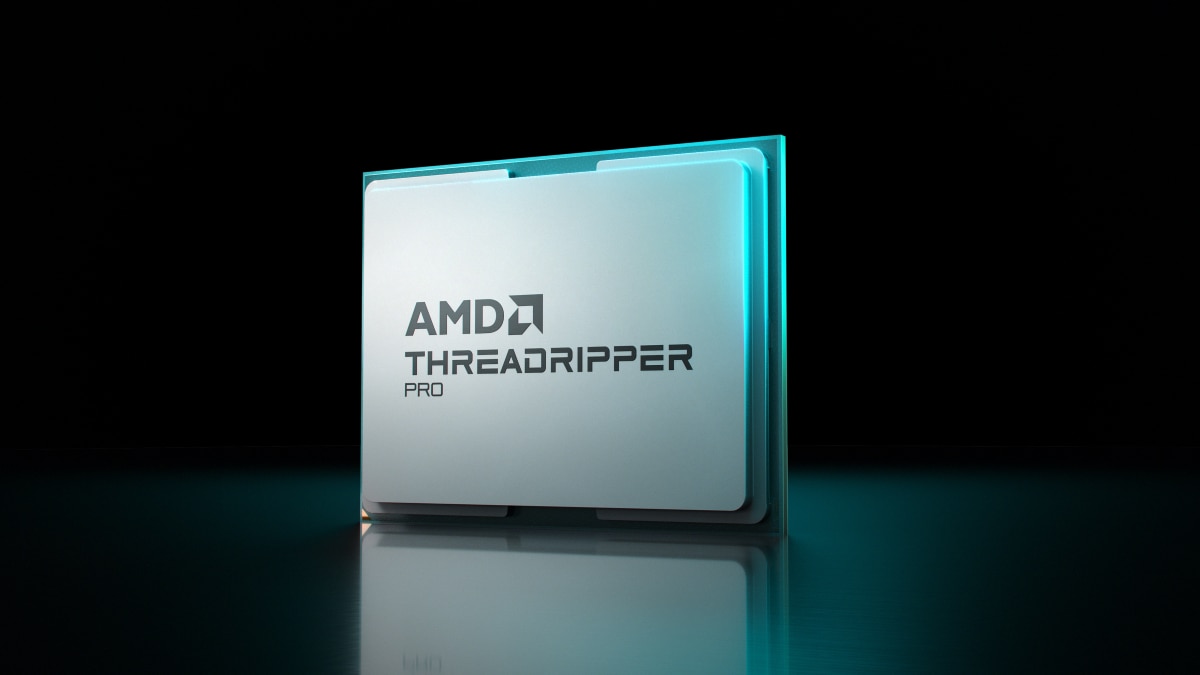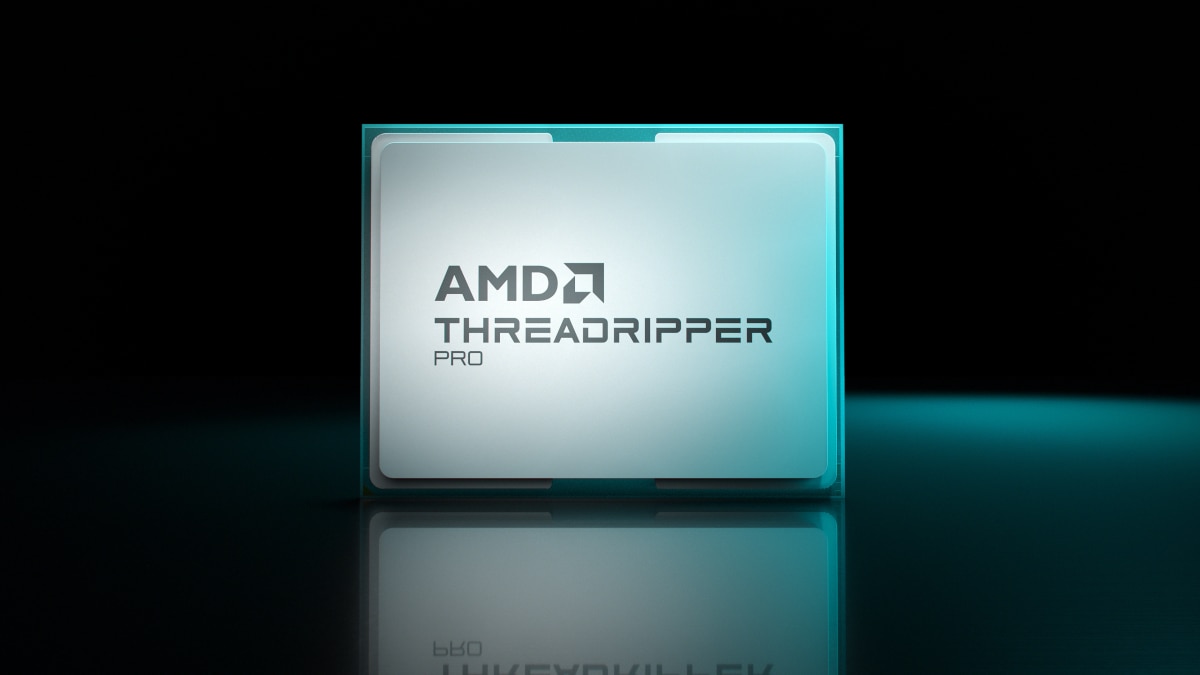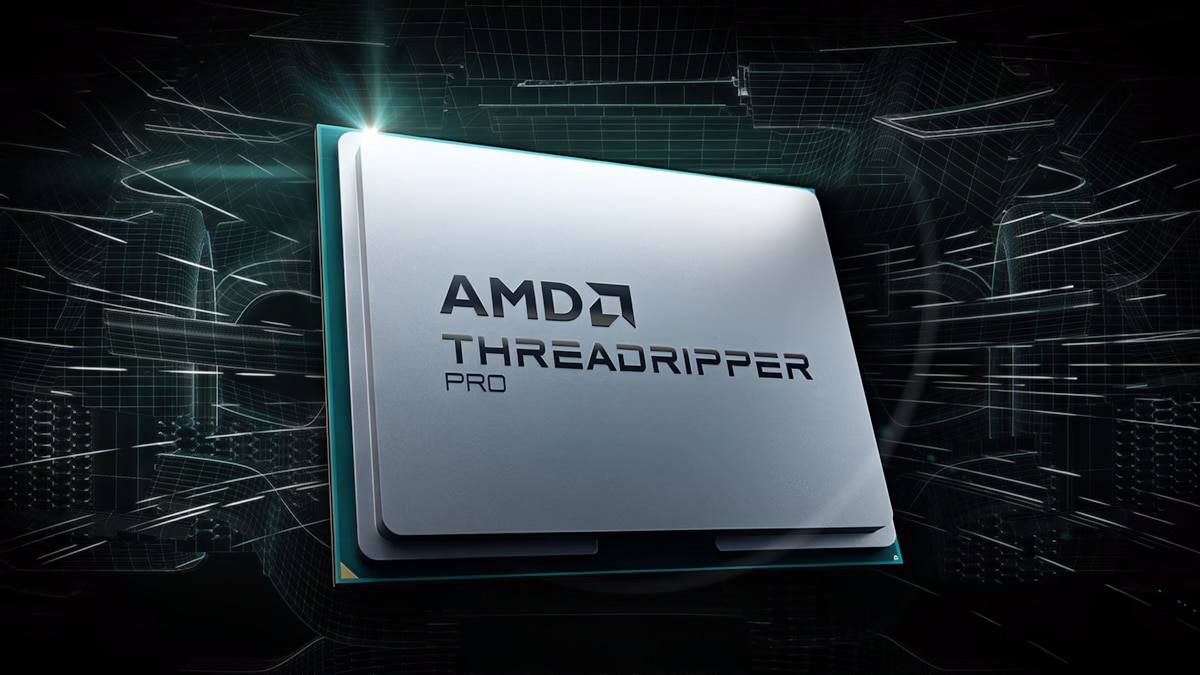How to Cut Your Virtualization Costs Without Sacrificing Performance
May 20, 2025

If you’re managing an enterprise IT budget in 2025, you’ve likely felt the effects of “IT inflation”. Rising licensing costs, increased power demands, and the pressure to support AI workloads are putting a squeeze on IT spending.
The recent virtualization licensing changes in the industry have intensified this challenge. With companies shifting to a per-core licensing model, IT leaders now must rethink how they deploy infrastructure efficiently. AMD estimates that virtualization license costs can be up to 83% of the Total Cost of Ownership (TCO) of a serveri – and other software costs can add to that expense.
Here’s the good news: AMD EPYC™ processors offer an enterprise grade, high performance, power efficient solution.
Why Upgrading Your Hardware Can Save You Money
Holding on to older infrastructure might feel like a safe cost-saving move, but realistically, outdated servers often increase operational expenses. Older hardware tends to consume more power, deliver less performance per core, and limit the efficiency of modern virtualization software. This can lead to underutilized resources and inflated licensing costs.
Upgrading to the latest AMD EPYC processors enables you to right-size your infrastructure. With higher core density, outstanding power efficiency, and support for faster memory and I/O, you can consolidate more workloads per server and dramatically cut the number of servers – and licenses – needed. It’s not just about more performance – it’s about smarter performance that directly translates into efficient energy use, rack space, and software spend.
Optimize Your Virtualized Infrastructure with AMD EPYC
With a modern CPU architecture design, advanced manufacturing process nodes, and five generations of innovation chiplet integration, AMD EPYC processors deliver industry-leading performance per core while also delivering power efficiencyii and core densityi. This enables you to consolidate workloads onto fewer cores, reducing the number of licenses you need or enabling more workloads for the same license cost.
Digging a little deeper exposes the true benefits at play:
- AMD EPYC CPUs provide exceptional performance leadership across a variety of enterprise workloads.
- To deliver 28700 units of integer performance, enterprises couldi:
- Reduce number of servers from 100 legacy Intel 6252 servers with 4,800 total cores to 29 AMD EPYC 9375F servers with 1,856:
- Save up to 61% on 5-year licensing costs,
- Save up to 50% on 5-year power costs, and
- Realize an estimated 61% lower 5-year TCO
Whether you're looking to reduce server footprint, cut power consumption, reduce licensing and ongoing operational costs, AMD EPYC processors are designed to help.
For example, Emirates NBD saw a 42% increase in performance and a 20% reduction in virtualization licensing costs after migrating to AMD EPYC.
Why Enterprises Trust AMD for Virtualization
Major data center operators – including hyperscalers like Google, Microsoft, and Meta – choose AMD EPYC processors for their ability to maximize workload performance while reducing operational costs. These same benefits are felt at the heart of the enterprise. Here’s what sets AMD apart in enterprise environments:
- Deep integration with VMware, Nutanix, and Red Hat virtualization ecosystems.
- Built-in security features with AMD Infinity Guard to safeguard workloads.
- Designed for modern IT environments with x86 ecosystem compatibility – from on-prem to hybrid cloud.
With AMD EPYC, you can modernize your infrastructure without overpaying for licenses, all while boosting performance and efficiency.
Maximize Your Budget With a Smarter Virtualization Strategy
IT leaders are looking for ways to cut costs without cutting capabilities. With AMD EPYC processors, you get exceptional performance, can lower licensing costs, and optimize energy efficiency – all while modernizing your infrastructure.
Learn more about AMD virtualization solutions here.
_________________________________________
i9xx5TCO-011: This scenario contains many assumptions and estimates and, while based on AMD internal research and best approximations, should be considered an example for information purposes only, and not used as a basis for decision making over actual testing. The AMD Server & Greenhouse Gas Emissions TCO (total cost of ownership) Estimator Tool - version 1.4, compares the selected AMD EPYC™ and Intel® Xeon® CPU based server solutions required to deliver a TOTAL_PERFORMANCE of ~28700 units of SPECrate®2017_int_base performance as of February 26, 2025. This estimation compares a 2P Intel Xeon Platinum 6252 (24C) based server with a SPECrate2017_int_base score of 287,
https://spec.org/cpu2017/results/res2019q4/cpu2017-20190916-18249.pdf versus 2P EPYC 9375F (32C) powered server with a score of 1010. https://spec.org/cpu2017/results/res2024q4/cpu2017-20241105-45389.pdf; compared to refreshing to a 2P Intel Xeon 32 core Platinum_8562Y+ based server with a SPECrate2017_int_base score of 729, https://spec.org/cpu2017/results/res2024q2/cpu2017-20240530-43623.pdf;
Environmental impact estimates made leveraging this data, using the Country / Region specific electricity factors from Country Specific Electricity Factors - 2024, and the United States Environmental Protection Agency Greenhouse Gas Equivalencies Calculator.
SPEC®, SPEC CPU®, and SPECrate® are registered trademarks of the Standard Performance Evaluation Corporation. See www.spec.org for more information.
For additional details, see https://www.amd.com/en/claims/epyc.html#q=9xx5TCO-011.
ii9xx5-113: SPECrate®2017_int_base comparison based on published scores from www.spec.org as of 11/20/2024. Comparison of 2P AMD EPYC 9005 series and Intel Xeon 5th Generation 8C, 12-16C, 32C, 56-64C, 96C, 128C, 160C, and 192C CPUs. 8C: 2P Intel Xeon Silver 4509Y (178 SPECrate®2017_int_base, 16 Total Cores, 11.125 SPECrate®2017_int_base / core, https://www.spec.org/cpu2017/results/res2024q3/cpu2017-20240826-44569.html ) 2P Intel Xeon Gold 6534 (209 SPECrate®2017_int_base, 16 Total Cores, 13.063 SPECrate®2017_int_base / core, https://www.spec.org/cpu2017/results/res2024q3/cpu2017-20240715-44124.html ) 2P AMD EPYC 9015 (239 SPECrate®2017_int_base, 16 Total Cores, 14.938 SPECrate®2017_int_base / core, https://www.spec.org/cpu2017/results/res2024q4/cpu2017-20241105-45379.html ) 12-16C: 2P Intel Xeon Silver 4510T (216 SPECrate®2017_int_base, 24 Total Cores, 9 SPECrate®2017_int_base / core, https://www.spec.org/cpu2017/results/res2024q2/cpu2017-20240421-42989.html ) 2P Intel Xeon Silver 4510 (249 SPECrate®2017_int_base, 24 Total Cores, 10.375 SPECrate®2017_int_base / core, https://www.spec.org/cpu2017/results/res2024q4/cpu2017-20240923-44864.html ) 2P Intel Xeon Silver 4514Y (273 SPECrate®2017_int_base, 32 Total Cores, 8.531 SPECrate®2017_int_base / core, https://www.spec.org/cpu2017/results/res2024q2/cpu2017-20240419-42932.html ) 2P Intel Xeon Gold 6526Y (352 SPECrate®2017_int_base, 32 Total Cores, 11 SPECrate®2017_int_base / core, https://www.spec.org/cpu2017/results/res2024q3/cpu2017-20240701-43952.html ) 2P Intel Xeon Gold 6544Y (396 SPECrate®2017_int_base, 32 Total Cores, 12.375 SPECrate®2017_int_base / core, https://www.spec.org/cpu2017/results/res2024q2/cpu2017-20240506-43391.html) 2P AMD EPYC 9135 (474 SPECrate®2017_int_base, 32 Total Cores, 14.813 SPECrate®2017_int_base / core, https://www.spec.org/cpu2017/results/res2024q4/cpu2017-20241105-45380.html ) 32C: 2P Intel Xeon Gold 6530 (558 SPECrate®2017_int_base, 64 Total Cores, 8.719 SPECrate®2017_int_base / core, https://www.spec.org/cpu2017/results/res2024q2/cpu2017-20240408-42740.html ) 2P Intel Xeon Gold 6538N (580 SPECrate®2017_int_base, 64 Total Cores, 9.063 SPECrate®2017_int_base / core, https://www.spec.org/cpu2017/results/res2024q2/cpu2017-20240419-42924.html ) 2P Intel Xeon Gold 6538Y+ (645 SPECrate®2017_int_base, 64 Total Cores, 10.078 SPECrate®2017_int_base / core, https://www.spec.org/cpu2017/results/res2024q3/cpu2017-20240715-44104.html ) 2P Intel Xeon Gold 6548Y+ (677 SPECrate®2017_int_base, 64 Total Cores, 10.578 SPECrate®2017_int_base / core, https://www.spec.org/cpu2017/results/res2024q3/cpu2017-20240715-44109.html ) 2P Intel Xeon Gold 6548N (677 SPECrate®2017_int_base, 64 Total Cores, 10.578 SPECrate®2017_int_base / core, https://www.spec.org/cpu2017/results/res2024q3/cpu2017-20240617-43881.html ) 2P Intel Xeon Platinum 8562Y+ (729 SPECrate®2017_int_base, 64 Total Cores, 11.391 SPECrate®2017_int_base / core, https://www.spec.org/cpu2017/results/res2024q2/cpu2017-20240530-43623.html ) 2P Intel Xeon Gold 6558Q (737 SPECrate®2017_int_base, 64 Total Cores, 11.516 SPECrate®2017_int_base / core, https://www.spec.org/cpu2017/results/res2024q3/cpu2017-20240715-44192.html ) 2P AMD EPYC 9355 (969 SPECrate®2017_int_base, 64 Total Cores, 15.141 SPECrate®2017_int_base / core, https://www.spec.org/cpu2017/results/res2024q4/cpu2017-20241104-45168.html ) 56-64C: 2P Intel Xeon Platinum 8570 (1040 SPECrate®2017_int_base, 112 Total Cores, 9.286 SPECrate®2017_int_base / core, https://www.spec.org/cpu2017/results/res2024q3/cpu2017-20240617-43885.html ) 2P Intel Xeon Platinum 8580 (1070 SPECrate®2017_int_base, 120 Total Cores, 8.917 SPECrate®2017_int_base / core, https://www.spec.org/cpu2017/results/res2024q3/cpu2017-20240825-44556.html ) 2P Intel Xeon Platinum 8592V (1100 SPECrate®2017_int_base, 128 Total Cores, 8.594 SPECrate®2017_int_base / core, https://www.spec.org/cpu2017/results/res2024q2/cpu2017-20240520-43552.html ) 2P Intel Xeon Platinum 8592+ (1130 SPECrate®2017_int_base, 128 Total Cores, 8.828 SPECrate®2017_int_base / core, https://www.spec.org/cpu2017/results/res2023q4/cpu2017-20231127-40064.html ) 2P AMD EPYC 9555 (1630 SPECrate®2017_int_base, 128 Total Cores, 12.734 SPECrate®2017_int_base / core, https://www.spec.org/cpu2017/results/res2024q4/cpu2017-20241104-45226.html ) 96C: 2P AMD EPYC 9655 (2090 SPECrate®2017_int_base, 192 Total Cores, 10.885 SPECrate®2017_int_base / core, https://www.spec.org/cpu2017/results/res2024q4/cpu2017-20241104-45170.html ) 128C: 2P AMD EPYC 9745 (2260 SPECrate®2017_int_base, 256 Total Cores, 8.828 SPECrate®2017_int_base / core, https://www.spec.org/cpu2017/results/res2024q4/cpu2017-20240924-44945.html ) 2P AMD EPYC 9755 (2720 SPECrate®2017_int_base, 256 Total Cores, 10.625 SPECrate®2017_int_base / core, https://www.spec.org/cpu2017/results/res2024q4/cpu2017-20240923-44824.html ) 160C: 2P AMD EPYC 9845 (2570 SPECrate®2017_int_base, 320 Total Cores, 8.031 SPECrate®2017_int_base / core, https://www.spec.org/cpu2017/results/res2024q4/cpu2017-20241104-45312.html ) 192C: 2P AMD EPYC 9965 (3100 SPECrate®2017_int_base, 384 Total Cores, 8.073 SPECrate®2017_int_base / core, https://www.spec.org/cpu2017/results/res2024q4/cpu2017-20241004-44979.html ) SPEC®, SPEC CPU®, and SPECrate® are registered trademarks of the Standard Performance Evaluation Corporation. See www.spec.org for more information.









